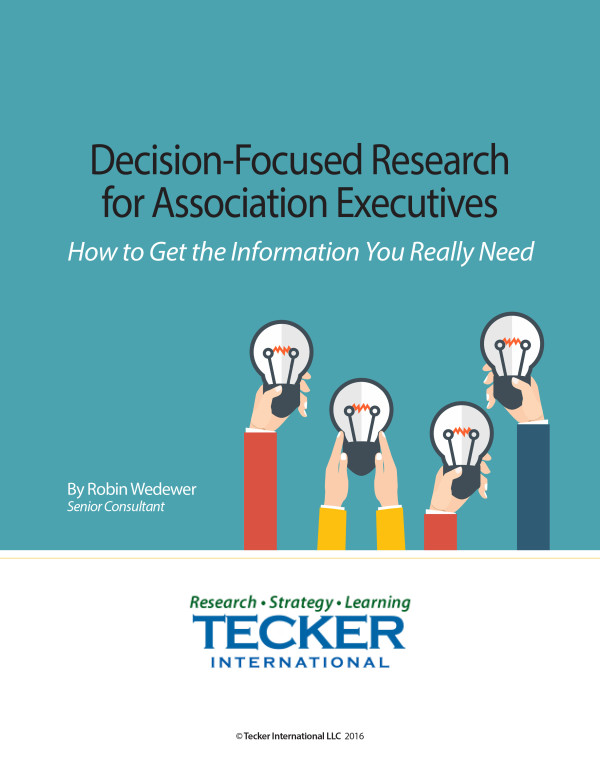Association leadership is a partnership between staff and board. This partnership is most successful when expectations are clearly defined and agreed to by all parties. Regular board self-evaluation demonstrates, symbolically and tangibly, the board’s commitment to performance appraisal as a constructive mechanism for promoting continued improvement for both halves of the partnership. The board’s willingness and demeanor in evaluating itself will say more to association staff about the integrity of evaluation policies for the staff than any verbal or written declaration.
An effective board self-evaluation program demonstrates nine important characteristics that will support continuous quality improvement.
1. PURPOSE
The purpose of any evaluation is to focus on key responsibilities, relationships, and outcomes – and to foster an environment of organizational excellence. Only a commitment on the part of board and staff members to strengthen group performance can overcome the complex challenges facing many associations today.
2. WHEN
Evaluations need to occur regularly as part of usual process. Too often, boards wait until there are real or perceived problems that need to be addressed before putting a routine system into place. One good approach is to use board self-examination as the first event in the association’s annual cycle of evaluation. Because planning and evaluation are cyclical, board self-evaluation can serve simultaneously as the first and last event in the planning/evaluation cycle. This activity provides an opportunity for the board and chief staff executive to begin discussions about problems, issues and needs that will serve as the basis for recommended critical objectives for the next year. Planning and evaluation activities are merged in fact, not just theory.
3. SELECTING THE RIGHT TOOL
Many instruments exist. Each association should review examples and adapt them to their own needs and values. It is important to adapt the tool and the evaluation criteria in advance of administering the tool. Use existing policies to help adapt such tools, and let everyone know what is expected in advance of the self-evaluation. Board members must be able to understand how to refine their behaviours and group process in order to better do their job.
4. DIMENSIONS OF PROFESSIONAL PERFORMANCE
While being a leader in an association is a unique opportunity, being a volunteer in a not-for-profit organization is not an excuse for providing less than professional performance in that role. Many would argue that expectations from the public raise the bar! Evaluation of professional performance occurs in three dimensions:
Are we accomplishing our goals? It is the board that is responsible for setting the strategic direction of the organization and allocating resources to achieve the goals.
Are we doing our job? In order to evaluate fulfillment of the board’s job responsibilities, there needs to be written position descriptions and criteria set for what knowledge, skills and experience are needed to be successful in the role of board member.
How are we doing the job? Although associations sometimes shy away from addressing behaviour competencies, focusing on this dimension of professional performance is essential. Most often, expected behaviours are articulated in core values of the organization, codes of conduct, conflict of interest policies and a code of ethics for the professional or industry.
5. OVERSIGHT AND DIRECTION SETTING
Evaluation components for consideration include a commitment to strategic planning and regular monitoring of progress by the board. The board should be actively engaged in meetings where the majority of the agenda and board time is focused on issues of the long-term future of the organization, policy and strategy.
6. RELATIONSHIP WITH CHIEF STAFF EXECUTIVE (CSE)
A good board evaluation system will include opportunities to ensure that there is a mutually agreed definition of what success will look like for the organization and for the performance of the CSE. Has the board provided the resources and authority necessary to achieve those expectations? Are issues that are controversial to either the board or the CSE discussed immediately or are they allowed to fester or deteriorate?
7. BOARD MEETING AND RELATIONSHIPS
An effective board doesn’t redo the work of committees or staff. They take the appropriate times for decision making and make informed decisions. They honour established procedures for board meetings and provide ample time for interested parties to be heard, but prevent a single individual or group from dominating discussions.
8. STAKEHOLDER RELATIONSHIPS
This aspect of board performances seeks to foster a clear understanding among stakeholders about the organization, its future direction and leadership’s decisions. Good boards actively nurture open lines of two-way communication and information sharing. They seek to be fully informed of stakeholder attitudes and interests and are fully prepared to represent the interests of the association to others. There is an effective process for acting responsibly to channel concerns, complaints and criticisms of the organization through the CSE.
9. PERSONAL QUALITIES
Individuals working as a group need to demonstrate an ability to think independently, grow in knowledge and rely on fact rather than prejudices. A good evaluation system will ask members to reflect on how well they are willing to hear, understand, and consider all sides of a controversial question while showing respect for the intentions and interests of others. Last, good leaders are prepared to let go of their leadership roles and fully support, not interfere with, those who follow in future leadership roles.
This blog was originally posted by the Canadian Society of Association Executives to support Glenn and Leigh’s webinar, Your Leadership Team: Who Say You Are Doing a Good Job.


